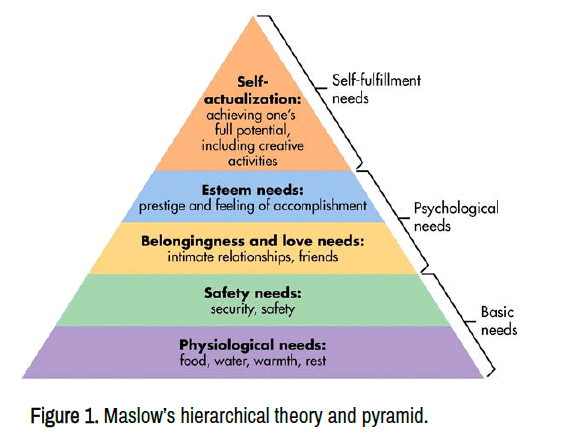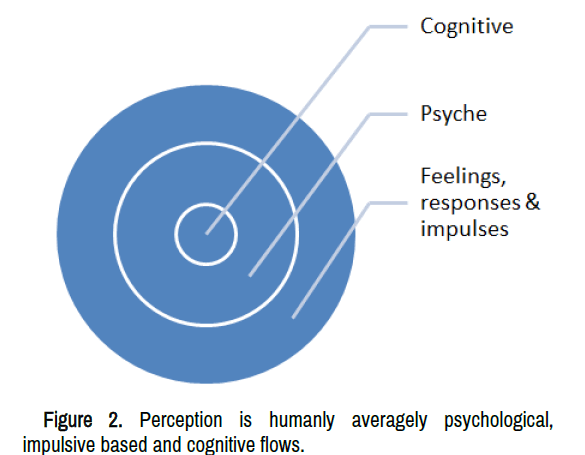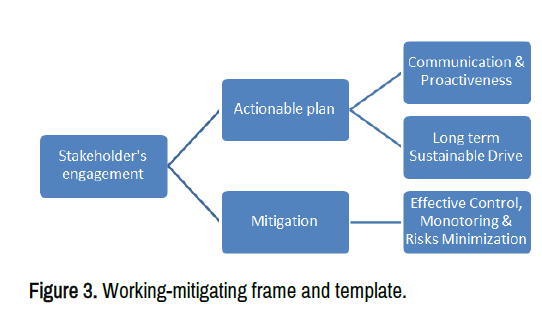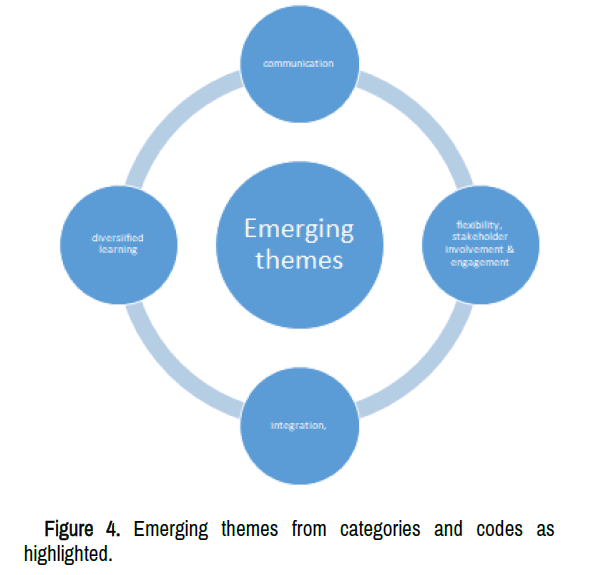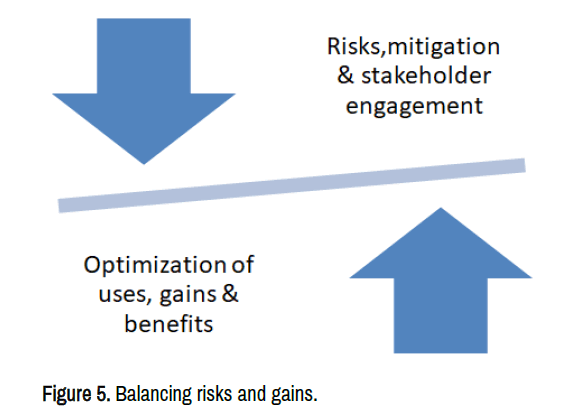Research Article - Clinical Schizophrenia & Related Psychoses ( 2022) Volume 0, Issue 0
A Psychological Contexts, Risk Perception and Nuclear Safety Awareness
Adewole Olukorede*Adewole Olukorede, Department of Marketing and Management, Indian Institute of Technology Roma and Italy, Roma, Italy, Tel: 393511196201, Email: clef.may1@gmail.com
Received: 27-May-2022, Manuscript No. CSRP-22-65820; Editor assigned: 30-May-2022, Pre QC No. CSRP-22-65820(PQ); Reviewed: 21-Jun-2022, QC No. CSRP-22-65820; Revised: 28-Jun-2022, Manuscript No. CSRP-22-65820(R); Published: 05-Jul-2022, DOI: DOI: 10.3371/CSRP.OA.063022
Abstract
This explicit and full draft presentation reports the conception of risks, nuclear safety and awareness.
The concept of risk level perception is discussed vividly and expatiating on nuclear risks perception drawing from the basic conceptualization and analogue examples or references such as from the ‘cognitive dissonance theory and consumer behavior theory.
Radiation applications in general should be justified and optimized in line with the most basic principle of radiation protection: ‘ALARA principle!
Essential communication and effective information dissemination and flow is significant and plays enormous roles in allaying and reducing fears usually associated with nuclear risks and radiation safety among the general public. Salient and key recommendations with a working frame and template are also presented.
Keywords
Risks perceptions and radiation • Cognition • Radiation and nuclear safety • ALARA• Psychological effects and perceptions of risks
Introduction
Psychological contexts, risk perception and nuclear safety awareness
Human behavior is basically and fundamentally tied around emotions, cognitive flows, psyche or mind-impulsiveness, beliefs or cultures, individual mind feelings and overall traditional or cultural beliefs, norms, ethics or cultures and societal perceptions [1].
Human behavior is drawn and entrenched around a mix of rational and irrational mixes or blend which sometimes often and in usual real practical senses towards decision makings, selections and perceptions often go beyond the rational bounds or idealized state of minds, conceptions and perceptions [2].
On the average, broadly and generally speaking humans often and usually associated and connect nuclear facilities, energy or applications with risks and danger even at the most tolerant and friendly level of applications or use [3].
This is not unconnected with emotional feelings, psyche or minds, perceptions and feelings that often triggers the risks level and anxiety of apprehensive mind state, fear and emotional worries or psychology and mind bogging worries or concerns stemming [4].
Maslow’s need hierarchical theory pointed and enumerated safety needs which occupies the base of a 5 components stratified-hierarchical need encompassing: “safety, food, hunger and thirsts, self-esteem, attainment and actualization” in ascending order but decreasing level of needs as the most sought urgently and very crucial wants or need lies occupying the base of the 5 layered stratified-hierarchical need pyramids comprise; “food, safety, hunger, thirsts and psychological needs”.
Scope and objectives
This explicit presentation is based on the qualitative analysis of the narratives, risks perception and radiation risks exploring the conceptions of nuclear and radiation risks from cognitions, mind-set and psychological or human feelings, while identifying the fact that humans often over exaggerate the risks and adversaries of radiation and nuclear risks beyond the benefits, which are often times over looked or referenced except war fares [5].
Recommendations were also made for policy and decision makings, while presenting some hypothesis formulations or assumptions that could be worked on in subsequent studies and research activities [6].
Maslowhierarchy of needs: The most basic fundamentally recognized need is psychologically basic, necessities and essential needs, exigency or safety represented most and relatively largest at the widest base of the pyramid [7].
Individuals and organisms largely humans would seek more and fundamentally most basic needs psychologically as identified and established in the pyramid demonstrated hierarchically by Maslow before seeking for higher needs; ‘esteem, self and personal aggrandizement or praises representing the tiniest fraction of the hierarchically based established pyramid at the topmost peak or summit.
In line and extrapolation or deduction from the Maslow’s hierarchical need recognition stratified layered pyramid the search and crave of humans for safety and psychological pyramids dominating the base of the pyramid exemplifies and embellishes the fact that humans find themselves in an increased apprehensive state of mind and worries when it comes to nuclear energy in fear of related risks, fallouts, catastrophes or accidental eruptions, bearing or consequences and effects [8].
Another crucial domain connected with the risk perception level connected and associated with nuclear safety, measures and applications is the conceptualization built around “cognitive bias, dissonance and cognitive consistency associated theories”.
Extrapolating elsewhere or similarly in analogy and drawing from consumer behavior, action and modes, cognitive seemingly irrationality/modes.
Materials and Methods
A qualitative approach has been applied and adopted in the present research finding and implementation.
A data capture has been conducted from qualitative data instruments by interview, phone conversations and survey from a few selected individuals and respondents to capture their opinions, conceptions or notions and perceptions of nuclear risks, safety and power.
A simulated response and capture was presented in codification, extrapolations and arrival at the key themes.
Cognition and behavioral mode/irrationality, cognitive theory and consumer behavior
A popular, well famous and prominently known cognitive consistency theory still extant following literature revelations in consumer behavior remained and has been the cognitivedissonance theory [9]. The primary and most fundamentally crucial implication of this is the fact and realization that consumers rationalize their choice field and options by enhancing or embellishing the positive aspects and attributes or traits of the close alternatives by suppressing its negative aspects.
In a likewise manner and similarly as illustrated and highlighted above with consumer behavior the same analogically goes for nuclear safety awareness, risks level and overall perception drawing from the “cognitive consistency theories” or “cognitive bias” as enumerated and illustrated [10].
Most probable and likely people and the average person tends more highly to exaggerate the risks associated with nuclear applications and de-emphasize or emphasize less the benefits accruable or amounts in contrast low to the risks being heightened often and relatively placed higher in line with the cognitive consistency theories like enumerated and demonstrated previously notwithstanding we do not have to undermine the potential risks but rather emphasize and establish right communication, orientation and dissemination on safety awareness (Figure 1).
Maslow’s hierarchical theory and pyramid
Safety and psychological needs:
Maslow hierarchy of needs: The most basic fundamentally recognized need is psychologically basic, necessities and essential needs represented most and relatively largest at the widest base of the pyramid.
Individuals and organisms would seek more and fundamentally most basic needs psychologically as identified and established in the pyramid demonstrated hierarchically by Maslow before seeking for higher needs; ‘esteem, self and personal aggrandizement or praises representing the tiniest fraction of the hierarchically based established pyramid at the topmost peak or summit.
As an interesting illustration; identifying a convergence point, nexus and bearing of Maslow’s hierarchical needs, grounded and rooted in motivation as identified with Theories X, Y:
McGregor's theory X and theory Y and Maslow's hierarchy of needs are both rooted in motivation theory. Maslow's hierarchy of needs consists of physiological needs (lowest level), safety needs, love needs, esteem needs, and self-actualization (highest level). According to Maslow, a human is motivated by the level they have not yet reached, and self-actualization cannot be met until each of the lower levels has been fulfilled. Assumptions of theory Y, in relation to Maslow's hierarchy places an emphasis on employee higher level needs, such as esteem needs and self-actualization [11].
For McGregor, theory X and theory Y are not opposite ends of the same continuum, but rather two different continua in themselves. In order to achieve the most efficient production, a combination of both theories may be appropriate.
This approach is derived from Fred Fiedler's research over various leadership styles known as the contingency theory. This theory states that managers evaluate the workplace and choose their leadership style based upon both internal and external conditions presented.
McGregor also believed that self-actualization was the highest level of reward for employees. He theorized that the motivation employees use to reach self-actualization allows them to reach their full potential. This led companies to focus and lay emphases on how their employees were motivated, managed, and led, thereby resulting, and creating a theory Y management style which focuses on the drive for individual self-fulfillment. McGregor's perspective places and directs the responsibility for performance on managers as well as subordinates.
In line and extrapolation or deduction from the Maslow’s hierarchical need recognition stratified layered pyramid the search and crave of humans for safety and psychological pyramids dominating the base of the pyramid exemplifies and embellishes the fact that humans find themselves in an increased apprehensive state of mind and worries when it comes to nuclear energy in fear of related risks, fallouts, catastrophes or accidental eruptions, bearing or consequences and effects.
Another crucial domain connected with the risk perception level connected and associated with nuclear safety, measures and applications is the conceptualization built around “cognitive bias, dissonance and cognitive associated theories”.
In line with the ‘cognitive dissonance theories humans averagely would enhance the positive attributes associated with the things they like while playing heavily down and speaking bad of the things they dislike, fear or don’t like nor show passion and affection just as consumers would speak good and enhance positive attributes with brands they like and speak ill of brands they dislike or don’t like nor show interest and passion.
Humans tends to exaggerate the risks associated with nuclear facilities or related in line as well with the cognitive theory; however, the level of technical education and scientific knowledge could play a significant role in dampening and lessening the level of perception, fear and anxieties or worries usually associated (Figure 2).
Precept and working template proposition for protocol in nuclear power action-based plan monitoring and control
Risk level conception, perception, cognitive psyche and flow in nuclear applications.
Key elements and attributes of nuclear risks perception level in general and association with risks have been outlined.
Source: Draft study and author
This layered structure obviously from psychological perspectives vividly expresses the risks level perceptions and most essentially can be extremely useful in explaining and discerning the risks level perception associated with nuclear practices, radiation based applications and technology usually heightened and triggered among the public, not only those resident proximal or neighbourhood of nuclear facilities and especially also those with limited technical and scientific skills in contrast to those with high scientific, technical and technology based backgrounds or scientifically inclined and high tech based experts.
Furthermore: In line and extrapolation or deduction from the Maslow’s hierarchical need recognition stratified layered pyramid; the search and crave of humans for safety and psychological pyramids dominating the base of the pyramid exemplifies and embellishes the fact that humans find themselves in an increased apprehensive state of mind and worries when it comes to nuclear energy in fear of related risks, fallouts, catastrophes or accidental eruptions, bearing or consequences and effects.
In addition, this points to and serves as a bearing to the following hypothesis presentation looking again and taking note of the risk level indicators highlighted previously; analyzed and the presented correlation matrix expanded upon.
Hypothesis
Formulations, conception and hypothesizing risks level perception:
• Risks and nuclear dangers or risks averagely in humans is cognitive in origin.
• Humans in general especially outside the scientific-technical fields tends and often do exaggerate more or over-exaggerate associated and potential risks or dangers connected with nuclear power facilities, infrastructures and installations.
Suggestions: Recommendations in line with stakeholders engagement and communication: Averagely often times humans tend to over stretch or do over estimate and exaggerate the risks, dangers or damages and adversities or effects do associate and connected with nuclear power applications, utilization and uses overplaying the dangers rather than mentioning the gains and benefits not unconnected with the “dissonance and cognitive theories as seen in consumer behavior, psychology and fundamentally from dissonance theories as previously mentioned.
This is not to undermine nor under play or ignore the risks or potential damages and severities associated and potentially open to nuclear exposure negligently but the idea is to assure the right monitoring control, planning templates and communicating effectively the gains and benefits associated with nuclear power installations while proactively responding and reacting to the risks or negligent dangers.
In this light, bearing and direction the right protocol should be established and enforced towards an actionable plan, frame and sustainable drive as presented and proposed here (Figure 3).
Results and Discussion
Proposition: Working frame towards mitigation and action plan for radiation risks, nuclear safety and awareness
Analysis from qualitative data
Extrapolated/Simulation: A simulated/extrapolated responses and illustrations of risks, nuclear safety and awareness: attributes and features from the research questions, interview and survey.
It is extrapolated, projected and assumed from the responses captured from the interviews, survey and questionnaires in arriving at the ‘themes from the analyses and code
• I perceive radiation feelings, fear and risks from within and inner mindset, shaped and coupled by responses from the society: 78-93%.
• Effective information dissemination and integrated communication mix would enhance acquaintance with radiation benefits, differentiating dangers from useful applications and at large change perceptions, and allay fears of radiation and exaggerated feelings or wrong perceptions. smooth functioning structures: 89-99%.
• A well communicated scheme, and effective monitoring control, plans and scheme will re-orientate perceptions of non-technical individuals, with less or no scientific skills of radiation. change process would enjoy smooth transition in the workplace: 75-85% or over.
• A relaxed structure can enhance change transitions, localized stabilization and domains in moving to new technologies and energy schemes of nuclear bases by proper and well stakeholder engagement: 85%.
Radiation risks: Nuclear safety, attributes and awareness: A simulated/extrapolated responses and illustrations of the research questions with the codes or short phrases and labelled categories A,B,C and D.
Emerging themes and codification
From these categories as stated from A,B,C and D, the following themes emerge as cognition, diversified learning, integration and effective information dissemination, communication, and flexibility and stakeholder’s engagemen as presented in Figure 2. These align with the research findings, research questions as presented and the scope of the investigation and research (Figure 4).
Emerging themes
Source: Author
The simulated responses support the presented models in Figure 2, which highlights cognition as a bearing of perceptions of nuclear risks like other kinds of risks or perceived dangers from notions, mindsets and perceptions or human feelings.
The codifications from the simulated responses leads to the emerging themes.
Deduction, analysis and interpretations from the themes: Why do we emphasize communication and its roles? A well-integrated communication-mix and well drafted monitoring scheme inculcating diversified learning, and enlightening are key in fostering acquaintances with best radiation practices and nuclear safety.
This would obviously and tremendously enhance smooth going in a truly sought and anticipated peaceful working environments free of radiation hazards or minimal and a social community safe enough for living from diverse learning, acquaintances with basic radiation facts essential for public, those with less or no scientific skills about the concept for re-orientation, involvement and stakeholder engagement.
Diversified learning can trigger new and individual insights, decentralization and self synchronization.
In connection with theory X and Y, pointing to C2 from Theory Y philosophical orientation, the following is presented.
As a demonstration theory X and theory Y significantly have implications in military command and control (C2). Older, strictly hierarchical conceptions of C2, with narrow centralization of decision rights, highly constrained patterns of interaction, and limited information distribution tend to arise from cultural and organizational assumptions compatible with theory X. On the other hand, more modern, network-centric, and decentralized concepts of C2, that rely on individual initiative and self-synchronization, tend to arise more from a "theory Y" philosophy.
Mission command, for example, is a command philosophy to which many modern military establishments aspire, and which involves individual judgment and action within the overall framework of the commander's intent. Its assumptions about the value of individual initiative make it more a theory-Y than a theory X philosophy (Figure 5).
Mitigation, orientation and allaying fear towards nuclear risks perception level
Source: Author
Striking a balance is key and highly significant justifying, sequel in connection and built on the most fundamental principle of radiation protection: ALARA.
In addition, it is extremely pertinent, highly imperative and essential justifying and optimizing uses of radiation and nuclear applications!
Draft and policy
Recommendations and implications for practices
It is quite exigent and imperative to have a pragmatically feasible working template in line with policy decision makings towards and along the direction and state of nuclear power plant monitoring and control measures that incorporates all relevant participants, stakeholders or representatives and key elements as laid-out and proposed here.
Conclusion
The concept of risk level perception is discussed vividly and expatiating on nuclear risks perception drawing from the basic conceptualization and analogue examples or references such as from the cognitive dissonance theory and consumer behavior theory.
Radiation applications in general should be justified and optimized in line with the most basic principle of radiation protection: ALARA principle.
It has become highly pertinent and imperative to allay the usual high level of risks perception and exaggerated fears or worries and apprehensive feelings usually shown by the general public and averagely more heightened and usually increased fear and anxieties expressed or perceived among people without scientific background or similar training even as reported by previous investigation.
I have come up with some hypotheses in line with risk level perception. Furthermore, the presented protocol is in line and strong justification for deepening knowledge of the subject and embracing effective communication tools to allay the risk and fear level perceptions often linked with radioactivity and nuclear applications and ensure right stake holder engagement as reflected in the novel and presented working template shown in Figure 3.
It is quite exigent and imperative to have a pragmatically feasible working template in line with policy-decision makings towards and along the direction and state of nuclear power plant monitoring and control measures that incorporates all relevant participants, stakeholders or representatives and key elements as laid-out and proposed here.
Competing Interests
There are no competing interests as declared by the authors.
References
- Carson M Charles. "A historical view of Douglas McGregor's Theory Y". Manag Decis 43 (2005): 450–460.
- Vidya H. "Theory X & Theory Y". Int J Recent Res Asp 2 (2015): 20–21.
- McGuire WJ. Personality and Susceptibility to Social Influence. In Handbook of Personality Theory and Research, EF Borgatta and WW Lambert, eds, Rand McNally, Japan. (1968): 1130-1187.
- McGuire W. The Nature of Attitude and Attitude Change. In Lindzey, G & Aronson, E (eds.) Handbook of Social Psychology, (2nd ed.) Addison–Wesley Publisher Co; Inc; Reading, Mass. 1969.
- Mazursky D, LaBarbera P and Aiello A. When consumers switch brands. Psychol Mark 4 (1987): 17-30.
[Crossref]
- Meyers-Levy and Alice M Tybout. Schema Congruity as a Basis for Product Evaluation. J Consum Res 16 (1989): 39-54.
- Neal C, Quester P and Pettigrew S. “Consumer Behaviour: Implications for Marketing Strategy” (5th edition) Berkshire: McGraw-Hill publisher, Australia. 2006.
- Tannenbaum H. Theories of cognitive consistency; A sourcebook. Rand-McNally: Chicago. 1968.
- Vassiliou Marius, David S. Alberts, and Jonathan R. Agre. "C2 Re-Envisioned: The Future of the Enterprise." CRC Press, New York. 2015. 98-99.
- Vassiliou Marius, David S and Alberts. "Mission Command and Agile C2." Proc. 22nd International Command and Control Research and Technology Symposium (ICCRTS). Laurel, Maryland. 2017.
- Worth, Michael. Nonprofit Management: Principles and Management. SAGE publisher, United States of America. 2019: 248.
Citation: Olukorede, Adewole. " A Psychological Contexts, Risk Perception and Nuclear Safety Awareness.” Clin Schizophr Relat Psychoses 16S (2022). Doi: 10.3371/CSRP.OA.063022
Copyright: ©2022 Olukorede A. This is an open-access article distributed under the terms of the Creative Commons Attribution License, which permits unrestricted use, distribution, and reproduction in any medium, provided the original author and source are credited This is an open access article distributed under the terms of the Creative Commons Attribution License, which permits unrestricted use, distribution, and reproduction in any medium, provided the original work is properly cited.







